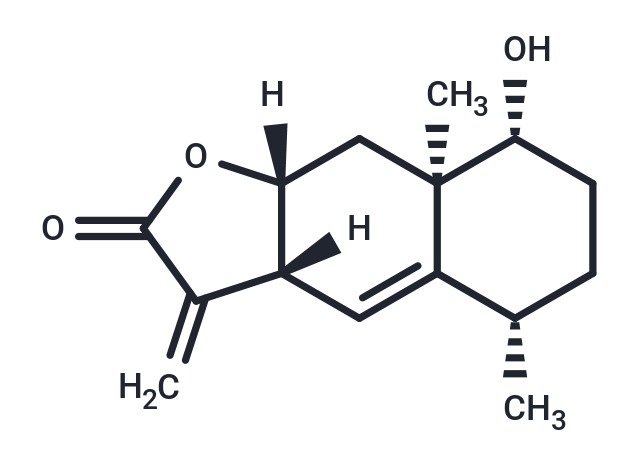Shopping Cart
- Remove All
 Your shopping cart is currently empty
Your shopping cart is currently empty

1beta-Hydroxyalantolactone is a small molecular compound isolated from the flower head of the medicinal plant giant British flower, which can inhibit the expression of TNF-α, IL-17 and IFN-γ in cells, promote the secretion of TNF-α, IFN-γ and IL-17, and prevent and treat rheumatoid arthritis.

| Pack Size | Price | Availability | Quantity |
|---|---|---|---|
| 2 mg | $269 | In Stock |
| Description | 1beta-Hydroxyalantolactone is a small molecular compound isolated from the flower head of the medicinal plant giant British flower, which can inhibit the expression of TNF-α, IL-17 and IFN-γ in cells, promote the secretion of TNF-α, IFN-γ and IL-17, and prevent and treat rheumatoid arthritis. |
| In vitro | Attenuating atopic dermatitis-like skin lesions induced by 2,4-dinitrochlorobenzene in the mouse, 1beta-Hydroxyalantolactone has been demonstrated[1]. |
| Molecular Weight | 248.32 |
| Formula | C15H20O3 |
| Cas No. | 68776-47-6 |
| Smiles | [H][C@@]12C[C@@]3(C)[C@H](O)CC[C@H](C)C3=C[C@]1([H])C(=C)C(=O)O2 |
| Relative Density. | 1.17 g/cm3 (Predicted) |
| Storage | store at low temperature,keep away from direct sunlight | Powder: -20°C for 3 years | In solvent: -80°C for 1 year | Shipping with blue ice. |

Copyright © 2015-2024 TargetMol Chemicals Inc. All Rights Reserved.